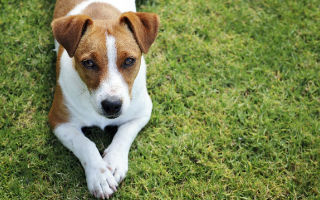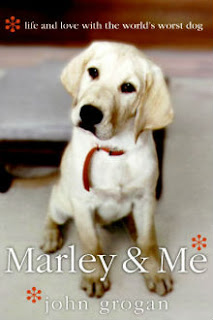It started way back in 1933 when Virginia Wolf published Flush, a cleverly written biography about Elizabeth Barrett Browning’s dog which told his story from abandoned stray to much loved pet.
Then fast forward to 2005 when Marley and Me, by John Grogan, was released, telling the story of one man’s attempt to live with “the world’s worst dog” which became a sentimental favourite and a hit 2008 movie starring Owen Wilson and Jennifer Anniston.
And now the occasional quirky book on pets has become a veritable downpour of stories about dogs and cats, and yes, even pigs and owls, variously saving their owners’ fractured lives, making a difference in the wider community, or shining a light on little discussed social issues.
Pet memoirs are big business
Pet memoirs, as the genre is unofficially known, have become big business. Both for the authors who recount, with great affection, how the beloved animal in their care changed their life, and the publishing industry which has found that the reading public has an endless appetite for these often inspiring stories.
But why have cats and dogs, owls and pigs, suddenly found themselves at the centre of a publishing phenomenon? What is it about our current age that has people snapping up these stories with ever increasing frequency?
It clearly goes beyond the simple fact that people love cute animals. That is hardly a revelation. It makes sense that owners, often grappling to come to grips with the recent passing of their beloved pet, would eulogise them in a heroic, life-affirming way. We do it with our human loved ones, and since pets are considered family members, it makes perfect sense that we would do the same for them.
But Daniela Rapp, an editor at St Martin Press’s (and awash in pet memoir submissions), thinks she may know why these books have struck a chord, beyond the need we have to feel close to cute and fluffy and feathery animals.
A special bond
In a guest post she wrote for the Pet Bookshelf Blog in May 2010, she postulated that the Global Financial Crisis has turned the focus of peoples’ lives well and truly back on to their families. She also thought that people were beginning to increasingly appreciate how unique animals are and how special the bond between them and their two-legged friends really is.
“And lastly, humans have always been fascinated with that special bond between animals and people – we love to hear heartwarming stories of the dog that changed someone’s life, the cat that made everyone’s day brighter, or the bird that was able to communicate desires and dislikes. The wall between us and the animal kingdom is one of the last frontiers, and it is slowly being dismantled, as our understanding of animal behavior and communication grows,” wrote Daniela.
In short, we are bonded to the animals in our lives in ways that go beyond simple appreciation of how cute or endearing they are. We feel an affinity to them, and even more so when they connect with us in ways that enrich our lives or the world in general.
It’s also true that in a frantically-paced, rapidly changing world where many people feel ripped from the moorings of old certainties, whether work or personal, animals are an emotional touch point. We may not understand why our job has gone overseas, or how to program our Tivo, but there’s no mistaking how much our pets unconditionally love us. It is a bedrock certainty, an unwavering part of our lives that isn’t affected by failed relationships or bills we can’t pay.
Animals it seems make sense to us when little else does. And our desire to be ever closer to them is keeping this new genre growing in leaps and bounds, and the variety of titles available is as varied as the animal world itself.
The pet who changed my life
The first category could loosely be termed “The Pet Who Changed My Life”. This sub-genre usually centres on a pet who arrives into a family, and upsets the status quo to largely positive effect. Marley and Me is perhaps the best known title in this category. But it has been joined in recent years by the likes of Cleo by Helen Brown, about a black “part Abyssinian princess” cat who brings emotional healing to a family grieving the untimely loss of a child. It is about to be made into a big-budget movie, and has spawned a sequel, After Cleo Came Jonah, due out later this year.
Another more unusual entry in this field is Wesley the Owl: The Remarkable Love Story of an Owl and His Girl by Stacey O’Brien, which tells the tale of an abandoned barn owl who ended up rescuing his new human companion every bit as much as she rescued him.
All of these stories celebrate the love and devotion of animals that were only ever intended as pets but ended up becoming so much more, and changing their owners’ lives forever.
Changing communities
But animals don’t just transform the lives of individuals. They also affect entire communities, always for the better.
Dewey: The Small-Town Library Cat Who Touched the World by Vicki Myron speaks with great affection about a kitten found in the book returns box of a library who is adopted by one of the staff and becomes loved by the entire town. So popular is the now dearly departed Dewey that his story will be told on the silver screen in a film released in October this year.
But Dewey is not alone. He is kept company by Casper the Commuting Cat by Sue Finden, about a plucky feline who left home each day, shortly after his owner, spending his days riding the buses in Plymouth, England. He became a staple of many commuters’ lives, drawing people together who would otherwise have never interacted.
And also by The Good Good Pig: The Extraordinary Life of Christopher Hogwood by Sy Montgomery, which recounts the effect one piglet had on a New Hampshire rural community who drew together in ways no one, least of all his owner, could have foreseen.
Social issues
But the books in this genre are not all warm and fuzzy transformations of an individual’s or community’s life. Another critically important category uses the story of one animal in particular to cast light on a major social issue that otherwise may not receive the attention it deserves.
For instance, Making Rounds with Oscar: The Extraordinary Gift of an Ordinary Cat by David Dosa M.D., tells the story of a cat gifted with the ability to know when an Alzheimer’s patient was within hours of dying. This important book sheds light on terminal disease and death, two intertwined issues that most people shy away from but which Oscar’s beautifully told story provides a point of accessibility to.
Similarly, Saving Gracie: How One Dog Escaped the Shadowy World of American Puppy Mills by Carol Bradley documents through the life of one rescued cavalier King Charles spaniel, the nightmarish world of puppy farms, and the efforts of dedicated animal loves to close them down. Again, it’s an unpleasant topic but Gracie, who grows into a beautiful, affectionate dog despite her past abuses, provides a point of entry for people who would otherwise not acquaint themselves with this issue because of the horrifying subject matter.
Another worthy inclusion in this category is Until Tuesday: A Wounded Warrior and the Golden Retriever Who Saved Him by Luis Carlos Montalvan and Bret Witter which tells the story of US soldier who, traumatised by two tours of duty In Iraq, finds it almost impossible to re-integrate back into society. That is until he meets Tuesday a boisterous, affectionate and intelligent dog. This heartwarming book encourages discussion of what has become a major issue in a country which has been at war for over 10 years.
It would be easy to be cynical and make light of this genre as inconsequential stories about peoples’ pets. But this genre is far bigger than the simple affectionate ramblings about someone’s dog, cat or pig. It has exploded in popularity for the simple reason that it articulates, in ways people can instinctively relate to, a basic human need to be connected, to love and to make a difference.
They are in essence explorations of what it means to be human triggered by creatures that are anything but, and because they speak to such elemental parts of who we are, you can expect Fido, and his ilk to occupy even more space on bookshelves, and of course, in our hearts, for years to come.
(This is an article I originally wrote for writingbar.com, the official website of the Sydney Writers’ Centre where I work.)










